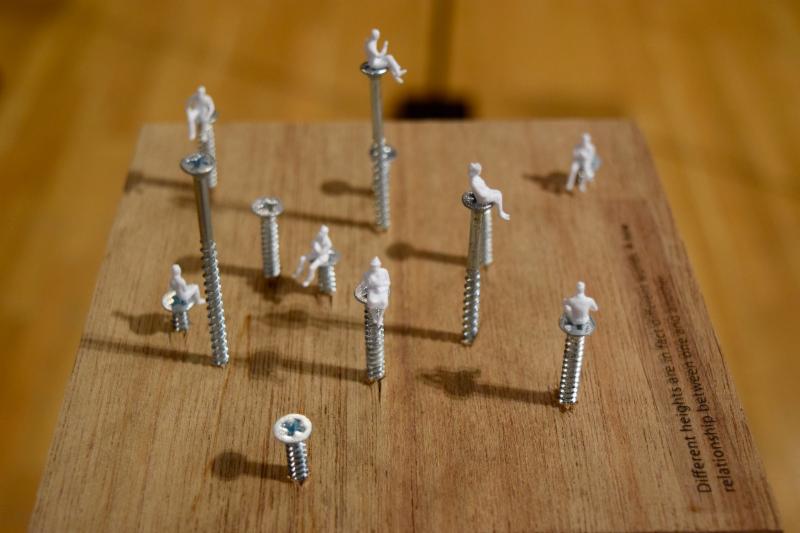Pillars, Columns, Cornerstones: Verticalism in Arts and Philosophy

Workshop Conducted by Artemis Herber
Sunday, April 24, 2016 from 11am–4pm
Workshop Participation: Free and open to the public; reservation required.
RSVP by April 20th, 2016 to events@chs.harvard.edu
Parking available on-site.
This workshop is presented by the Washington Sculptors Group in collaboration with the Center for Hellenic Studies, Washington DC and in conjunction with International Sculpture Day 2016.
Overview
Throughout time and history humankind has created structures that reach into the vertical realm of societies. Recent excavations of prehistoric circle gravesites in Saxony-Anhalt, known as the “German Woodhenge” from the Neolithic period, were originally built from huge tree stems in circle formations.
Within a similar time frame, the giant rocks of Stonehenge were lifted into upright standing formations to be defined as monumental, sacred structures. Architecture in ancient Mesopotamia, Egypt, Greece, and Rome can be characterized by vertical elevations of columns, pillars, obelisks, and architecture that relate to power, cults and beliefs. Today we still find references in architecture, art, and even events that represent monumental ideas that can be interpreted in many ways.
Philosopher Peter Sloterdijk, for example, refers to concepts of immune systems that societies developed since the beginning of humankind. Greek sculptors and architects translate the human scale into architecture, while in the 19th century this scale is extended into monumentalized historical quotations. What references do we find in our every day life? Monumental art today is seen in public places such as the vast concrete developments of shopping malls, amusement parks, and sports arenas. How are current monuments to be interpreted and understood in the context of history and every day life, and conveyed into small-scale work with every day materials? What kind of context do artists create once they craft small-scale sculptures the size of their hands? What statement can artists express through juxtapositions of large and small-scales?
The workshop offers hands-on activities with discarded, found or ready-made objects, exploring principles of vertical structures as architectural elements throughout history as well as today. Participants will be invited to respond to quotes from philosophers, architects, or anthropologists in order to create their own personal physical small–scale sculptures on site at the Center for Hellenic Studies.
Schedule
April 24, 11 – 4 pm:
Introduction Hand-out
Hands-on-activity
Presentation – Resume
Bring brown lunch bags!
Materials
Participants should bring small found objects of consumption or every day life (buttons, lids, cotton balls, cables, wires, chips, filings, screws, clips, rubber bands, toothpicks, sugar blocks, hair clips, office supplies, and more)
Participants should also bring hand tools and all sorts of glue, fasteners, tape and assembly tools for your own use or to share with the group. Keep in mind that we will work on a small scale, i.e. the size of a hand.
The workshop is free, but please, consider a small donation of $5-10 to cover the cost of materials provided for the workshop.
